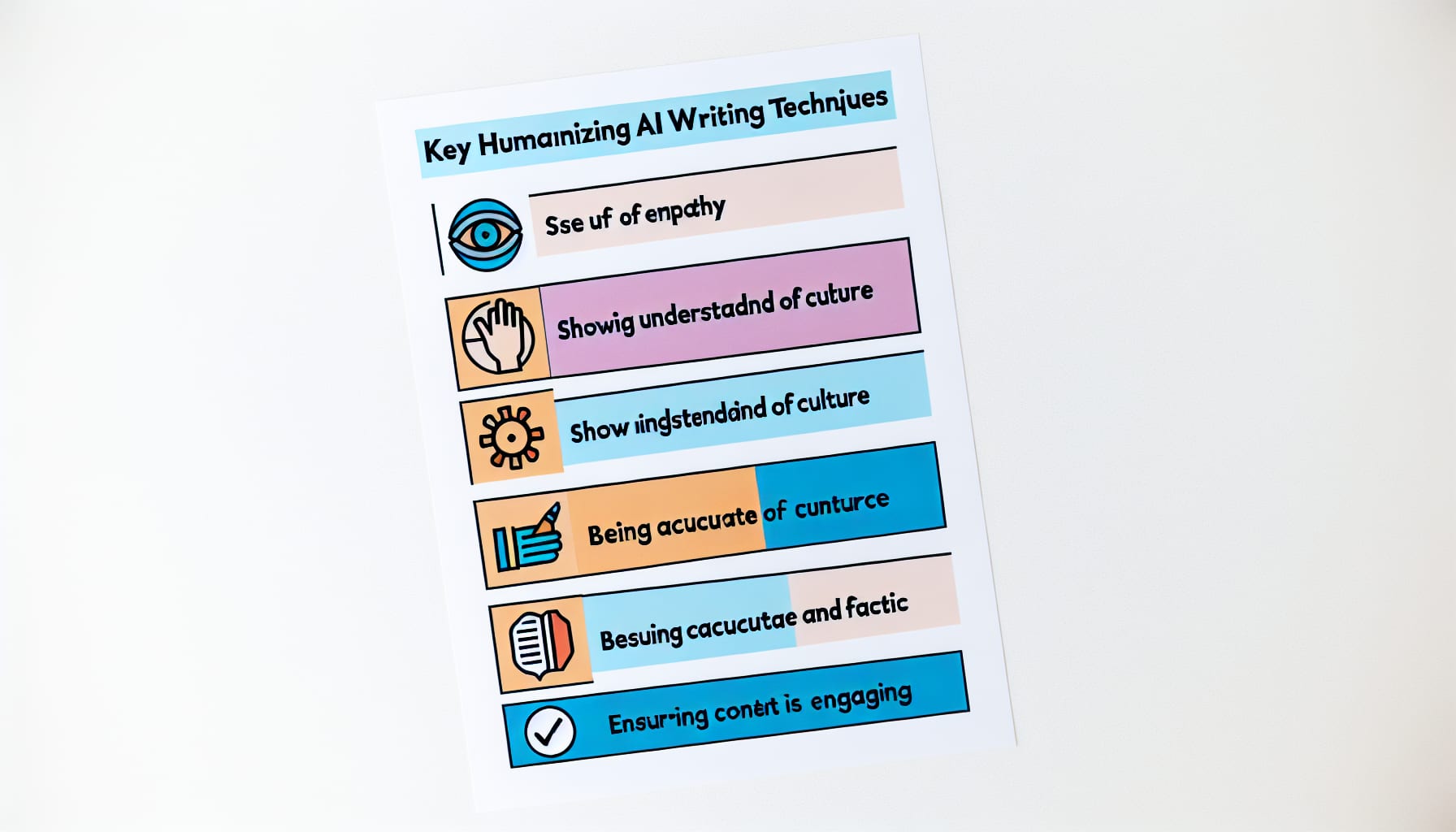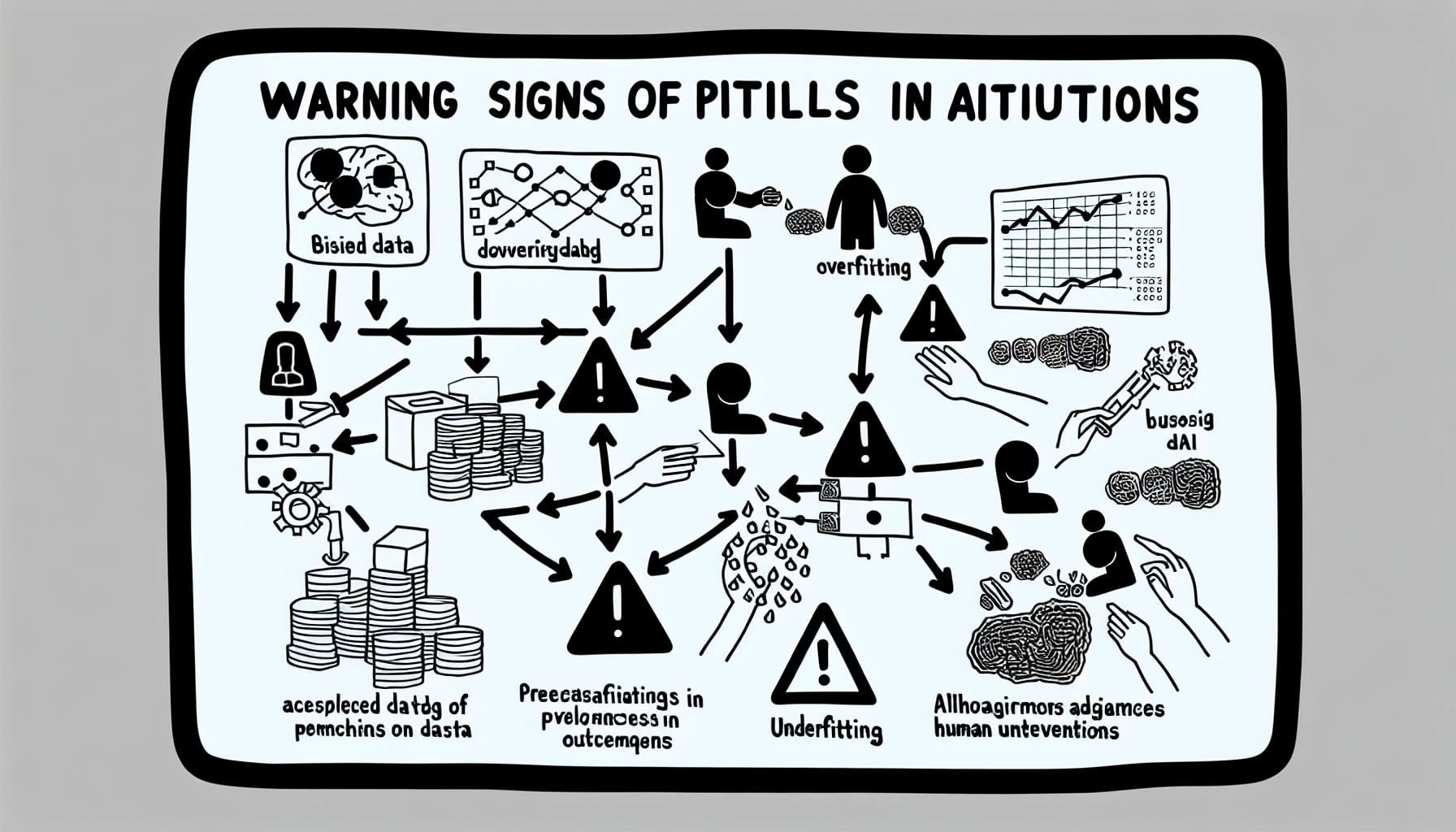AI writing tools are incredibly efficient, capable of generating articles, essays, and reports in seconds. But this speed often comes at a cost: the content can feel sterile, repetitive, and unmistakably robotic. For students facing AI detectors like Turnitin, marketers trying to connect with an audience, or writers aiming for an authentic voice, this is a significant problem. The core issue is that AI models are trained on vast, often formal, datasets and lack the personal experiences and emotional nuances that define human writing. They predict the next word based on statistical patterns, not genuine understanding.
This guide will show you how to bridge that gap. We’ll explore practical techniques to transform mechanical AI text into content that flows naturally and reflects a human touch. By learning to vary sentence structures, inject personal stories, and use specialized tools, you can create writing that is not only undetectable by AI checkers but also genuinely engaging for your readers.
Here’s a look at what we’ll cover:
Why does AI-generated text sound mechanical and easy to detect?
AI writing often has a certain “tell”—a quality that feels flat, overly formal, and just a bit off. This happens because Large Language Models (LLMs) don’t actually understand language in the way humans do. They are sophisticated pattern-recognition systems that have learned from immense volumes of text, much of it from formal sources like academic papers, reports, and websites. This training data shapes their output, resulting in text that often lacks the warmth and personality of human communication.

Mechanical Language and Lack of Emotion
AI-generated text often lacks a distinct personality and emotional depth because it cannot draw from real-life experiences or feelings.
When we write, we infuse our words with personal stories, opinions, and emotions. We might share a funny anecdote from the weekend or express frustration about a difficult task. AI has no memories or feelings, so its writing can feel disconnected and impersonal. It can mimic emotional language, but it struggles to convey genuine sentiment. This is why an AI might describe a situation factually but fail to capture the emotional weight a human writer would naturally include.
As one writing guide puts it, “AI is logical, humans are emotional. For this reason, great writing should connect on a feeling level.”
This emotional gap is a key reason why AI content can fail to resonate with readers. While grammatically perfect, it often lacks the soul that makes writing memorable and persuasive. Humanizing the text means adding back that missing layer of feeling and personal perspective, which is crucial for building a connection with your audience.
Uniform Sentence Structure and Repetition
AI models often fall into repetitive sentence structures and phrasing, creating a monotonous rhythm that is a key giveaway for detection tools.
AI algorithms love patterns. This affinity often leads them to generate text with unnaturally consistent sentence structures and lengths. You might notice paragraphs where every sentence starts similarly or follows the same subject-verb-object format. This uniformity creates a robotic cadence that is easily distinguishable to both human readers and AI detectors. Furthermore, AI tools tend to overuse certain words and phrases like “delve into,” “in today’s fast-paced world,” and “at the end of the day,” which have become red flags for AI-generated content.
According to a Forbes analysis, “The uniformity of AI-written text makes it easily distinguishable to the detectors.”
Natural human writing, in contrast, has a varied rhythm. We mix short, punchy statements with longer, more descriptive sentences. This variation keeps readers engaged and makes the text flow more conversationally. Breaking the AI’s predictable patterns is a fundamental step in making the content sound authentic.
Information Accuracy and Logical Inconsistencies
Without a true understanding of the world, AI can generate factually incorrect information or “hallucinations” that undermine the content’s credibility.
A significant risk with AI-generated content is its potential for factual inaccuracy. Because AI models predict text based on statistical probabilities rather than true comprehension, they can confidently state incorrect information, invent sources, or create logical inconsistencies. This phenomenon, often called “AI hallucination,” is a major pitfall for anyone relying on AI for research or factual content.
As one expert guide warns, “While AI models are trained on extensive datasets, they can still generate incorrect information or inconsistencies due to limitations in their training data.”
Relying on AI-generated facts without verification can damage your credibility. For students, this could mean a failing grade; for businesses, it could mean spreading misinformation. A critical part of the humanization process is rigorous fact-checking and ensuring that all claims, data, and references are accurate and sourced from reliable publications.
How can you make AI text more human with practical techniques?
Transforming robotic AI text into something that sounds genuinely human doesn’t require you to be a professional writer. By focusing on a few key areas, you can break the predictable patterns of AI and infuse your unique voice into the content. These manual adjustments give you full control and are essential for creating authentic, high-quality work.

Sentence Structure Diversification
Break up monotonous AI-generated paragraphs by mixing short, punchy statements with longer, more descriptive sentences.
AI often produces text with a uniform sentence length, which sounds robotic when read aloud. To fix this, consciously vary your sentence structure. Follow a long, complex sentence with a short, direct one. Ask a question in the middle of a paragraph. Don’t be afraid to start sentences with conjunctions like “And” or “But” for a more conversational flow. This variety creates a natural rhythm that mimics human speech and keeps the reader engaged.
Adding Personal Stories and Emotional Expression
Injecting personal anecdotes, opinions, and relatable emotions is the most effective way to make your writing unique and authentic.
AI cannot replicate personal experience. This is your greatest advantage. Instead of a generic statement like, “Travel helps you learn about new cultures,” share a specific memory: “Getting lost in a new city, stumbling into a hole-in-the-wall café, and ending up with a story you’ll tell for years—that’s how you truly learn.” Even small details, like mentioning “my favorite coffee shop” or “that class I barely passed,” make your writing sound like it came from a real person with a real life.
Active Voice Instead of Passive Voice
Switching from passive to active voice makes writing more direct, confident, and clear, avoiding the vague and formal tone common in AI text.
AI often defaults to the passive voice, which can sound evasive and impersonal (e.g., “Mistakes were made”). Flipping these sentences into the active voice (“I made mistakes”) makes them clearer and more direct. Active voice puts the subject front and center, showing ownership and confidence—qualities that are inherently human.
Simplify Language, Remove Redundancy and Jargon
Cut unnecessary jargon and filler words to make your writing more direct and confident, just like a human would speak.
AI sometimes pads sentences with overly formal words and fluff to sound more authoritative. Phrases like “it is of the utmost importance to note that” or “the utilization of” are dead giveaways. Trim the fat. Replace “utilize” with “use,” “in order to” with “to,” and “despite the fact that” with “although.” Saying things directly makes your writing stronger and more human.
Varying Sentence Starters
Avoid the repetitive sentence openings that AI often produces by consciously changing how you begin each sentence.
Scan your text for paragraphs where multiple sentences start with the same word or phrase (e.g., “It is…,” “The system…”). This is a classic AI trait. Mix it up by starting with a transition word, a prepositional phrase, or a short, bold statement. This simple change can dramatically improve the natural flow of your writing.
Incorporating Contextual Relevance
Anchor your content in specific, current contexts to demonstrate insider knowledge and make it less generic.
AI-generated content often feels like it could apply to anyone, anywhere, at any time. To combat this, add specific details that ground your writing in a particular context. Reference current events, cultural touchstones, or industry-specific scenarios. For example, instead of a generic statement like “Many people use digital platforms for communication,” try something more specific and relatable: “Your grandma’s on WhatsApp. Your boss lives in Slack. Digital life is the default.”
The Advantages and Applications of AI Humanizer Tools
While manual editing provides the most control, it can be time-consuming. For those facing tight deadlines, AI humanizer tools offer a powerful alternative. These specialized applications are designed to automatically rewrite AI-generated text, making it sound more natural and helping it bypass detection systems. They go beyond simple paraphrasing by fundamentally restructuring sentences and swapping vocabulary to mimic human writing patterns.

Key Functions and Underlying Technology
AI humanizers use sophisticated algorithms to rewrite text by altering sentence structures, vocabulary, and syntax to mimic natural human writing patterns.
These tools are powered by advanced Natural Language Processing (NLP) models trained on millions of examples of human-written content. This allows them to understand the nuances of tone, style, and rhythm that distinguish human writing from machine output. Instead of just replacing words with synonyms, they analyze the text and rebuild it to feel more authentic, all while preserving the original meaning.
As one tool provider explains, their technology “employs effective humanization techniques that completely restructure the vocabulary, phrasing, and syntax of any AI text.”
Saving Time and Improving Efficiency
The primary benefit of humanizer tools is their ability to transform robotic text into natural-sounding content in seconds, saving hours of manual editing.
Manually rewriting a long essay or article can be a tedious process. An AI humanizer automates this work, completing the task in a fraction of the time. This efficiency is a game-changer for students, content creators, and professionals who need to produce high-quality content quickly without compromising on authenticity.
Multilingual Support and Contextual Adaptation
Advanced humanizers support multiple languages and can adapt the text to different contexts, such as academic, marketing, or professional writing.
Many modern humanizers offer support for dozens of languages, making them valuable for a global user base. Additionally, some tools allow you to specify the intended purpose and audience. For example, you can set the tone for a university essay, a marketing article, or a formal report. This contextual adaptation ensures the output is not just human-like but also appropriate for its specific use case.
Compatibility with AI Detection Tools
These tools are specifically designed to produce content that can bypass popular AI detectors like GPTZero, Turnitin, and Originality.AI.
A key selling point for AI humanizers is their ability to make content undetectable. Many developers test their tools against the leading AI detection software to ensure their rewritten text achieves high “human” scores. For users concerned about their work being flagged, this provides a crucial layer of security and peace of mind.
Applicable Scenarios: Students, Writers, SEO, and Journalism
From students avoiding plagiarism flags to SEO agencies creating engaging content, AI humanizers have practical applications across various fields.
The use cases for these tools are broad and varied:
- Students: Can use them to refine AI-assisted drafts of essays and assignments, ensuring the final submission sounds original and avoids detection by academic tools like Turnitin.
- Writers and Copywriters: Can quickly polish AI-generated copy to meet client expectations for an authentic brand voice.
- SEO Specialists: Can create content that is not only optimized for search engines but also engaging for human readers, helping to avoid potential Google penalties for low-quality, automated content.
- Journalists: Can leverage these tools to refine AI-assisted drafts into polished, credible news articles that uphold journalistic standards.
Strategies to Avoid Common Mistakes and AI Detection Risks
Whether you’re editing manually or using an AI humanizer, achieving truly authentic content requires a thoughtful approach. Simply running text through a tool or making a few superficial edits isn’t enough. To create content that is both undetectable and genuinely valuable, it’s crucial to avoid common pitfalls that can undermine your efforts.

Overusing Clichés and Repetitive Expressions
Be vigilant in removing overused buzzwords and formulaic sentence structures that scream “written by a bot.”
AI tools are notorious for leaning on clichés and formulaic phrases. Expressions like “in the ever-evolving landscape,” “a game-changer,” or “dive into” are common in AI-generated text. These phrases are red flags for savvy readers and detection algorithms. Actively hunt them down and replace them with more specific and original language that reflects how you would actually speak about the topic.
Ignoring the Needs and Preferences of Your Target Audience
Failing to tailor the tone and language to your specific audience can result in content that feels impersonal, even if it passes an AI detector.
Humanizing text isn’t just about making it sound less robotic; it’s about making it resonate with a specific group of people. The language and tone that work for a technical audience of software developers will be different from what connects with small business owners. Always consider who you’re writing for. What are their pain points? What kind of language do they use? Tailoring your content to your audience is a hallmark of effective human communication.
Lack of Fact-Checking and Content Accuracy
Never trust AI-generated facts without verification; always cross-check data, quotes, and claims with reliable sources.
This point cannot be overstated. AI models can and do invent information. Assuming the factual accuracy of AI-generated content is one of the most dangerous pitfalls. Before publishing or submitting any work that includes AI-assisted content, you must verify every claim, statistic, and quote.
As one guide on the topic states, “One of the most dangerous pitfalls in working with AI content is assuming the factual accuracy of what it produces. AI makes things up. Often.”
Over-editing to the Point of Losing Authenticity
Ironically, polishing your text too much can make it sound artificial; embrace small imperfections that are natural to human writing.
In the quest to create “perfect” content, it’s possible to edit away the very quirks that make it feel human. Real human writing isn’t always flawless. It has occasional informalities, slight inconsistencies, and a unique rhythm. If every sentence is perfectly constructed and every transition is seamless, the text can start to feel sterile again. Don’t be afraid to leave in some of the natural imperfections that give your writing personality.
Combining with Human Review for Natural Flow
The ultimate strategy is to use AI as a co-pilot, where a human editor always has the final say to ensure quality, accuracy, and a genuine voice.
No automated tool can completely replace human judgment. The most effective workflow involves using AI for speed and idea generation, followed by a thorough human review. Read the final draft out loud. Does it sound like something you would actually say? If a phrase feels awkward or clunky, it probably is. This final human touch is what separates truly great content from something that merely passes an AI detector.
Conclusion
The line between AI-generated and human-written content is becoming increasingly important in our digital world. While AI provides unprecedented speed and efficiency, its output often lacks the authenticity, emotion, and nuance that connect with readers. The key isn’t to abandon these powerful tools but to learn how to use them wisely.
By applying practical techniques—like diversifying sentence structures, adding personal stories, and simplifying language—you can manually transform robotic text into something compelling. For those short on time, AI humanizer tools offer a fast and effective way to achieve similar results, producing content designed to be undetectable and natural-sounding.
Ultimately, the best approach is a partnership between human and machine. Use AI as a starting point, a draft generator, or a co-pilot. But always apply a final layer of human review to ensure accuracy, inject genuine personality, and create a final product that doesn’t just avoid detection but truly resonates with your audience. The goal, after all, isn’t just to write like a human—it’s to connect like one.
Tools like this won’t fix everything, but they can make things easier.
Sometimes, getting unstuck is just about removing one small barrier.
If this sounds useful to you, Feel Free to Explore the Tool
Here →









